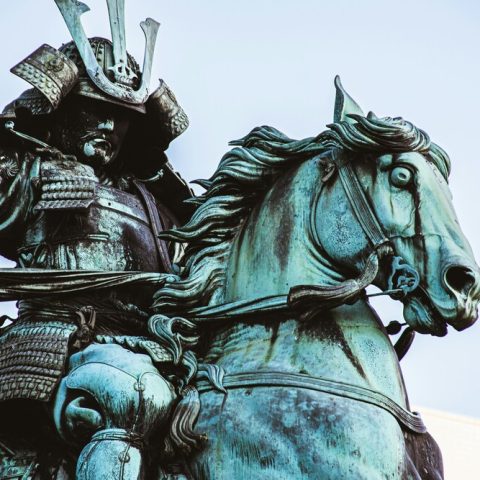
Since my childhood, the railway has been an interest of mine, and travelling by train is always exciting. Buying ekiben (box meals sold at railway stations) before boarding the train adds even more excitement.
Ekiben is not just an onboard meal and has more to offer rail travellers and the public. Today we are featuring ekiben, an iconic part of Japanese cuisine and culture.
It has been said that the first ekiben was released in 1885 when the current JR Tohoku Line was extended to Utsunomiya, Tochigi from Omiya, Saitama. Shirakiya, the local ryokan (Japanese Inn), offered rail travellers packages of two salt and sesame flavoured rice balls filled with salt plums and two pieces of takuan (radish pickles) wrapped in a bamboo skin, at the Utsunomiya Station.
With extensions of rail networks nationwide, many long distance trains began serving food on the train, and passenger numbers were increasing, therefore offering ekiben became essential for rail travellers as onboard meals. It took 26 hours between Tokyo and Aomori (the north end of Honshu) when the Tohoku Line was opened fully in 1891. You might think passengers these days could have meal breaks off the track in between terminals like the Western world, but Japan instead established the ekiben culture.

In the old days, when railways dominated domestic travelling, trains stopped at certain stations for a while in order to change locomotives and refill the water supply and coal. Sales clerks walked on platforms and approached and attracted passengers to sell their ekiben boxes through carriage windows or doors.These clerks were called tachiuri in the Japanese language and were one of the highlights of long distance train rides.

No matter whether passengers get ekiben at their departing stations or through tachiuri on the way, eating ekiben is a great pleasure on the train since the surrounding scenery creates a warm atmosphere and allows passengers to deeply think while travelling adds to the taste of an onboard meal. It is a unique experience and definitely worthwhile.

As long as ekiben represents the local cuisine cooked with local ingredients, having ekiben will be a memorable part of your stay in Japan. A big reason for this is that many ekiben meals are a way for their establishments to tell stories of their history.
Awajiya has been in the ekiben business since 1903 and since then has been catering bentos in the Kansai Region and JR Tokyo Station. They originally began as a ryotei (luxury Japanese restaurant) in Osaka, and the second generation of the family (Shujiro Teramoto) decided to start selling ekiben as part of the new business model, keeping with the trend at the time. Having already sold many different ekiben meals, Awajiya created their authentic Ayu (freshwater trout) sushi in 1911, with fish caught in Mukogawa River that were of fantastic quality thanks to its fresh water.
Due to the food crisis and rations on supply post World War II, rice was not supplied and many bentos were made of vegetables, which drew complaints from some customers. In response to this, Awajiya highlighted steamed breads as a main meal of ekiben in the late 1940-50s. Meanwhile, Kobe Station lost their ekiben retailers because of the owner’s loss in the war, and Awajiya was offered to replace them and move to Kobe. Just after the war ended in 1945, taking the Japanese National Railways’ (JNR) offer, their headquarters were moved from Namaze Station on the Fukuchiyama Line in Hyogo. Ever since, Awajiya has been expanding their businesses by acquiring more locations and more licenses for onboard retailing. Also, they pioneered reheatable ekiben without microwaves in 1987. Warm ekiben can be eaten by pulling out strings attached to the bento box.

Like Awajiya, the creative ekiben menus from the food crisis during and following WWII become famous and have remained popular for decades.
The most famous ekiben in Japan, Ikameshi has been served to rail travellers since 1941 at Mori Station in South Hokkaido. It was originally created as meals for the army, with squids that were caught in large numbers at the time and served with fillings. Ikameshi is boiled in pots and flavoured with a soy sauce-based authentic sauce. Abe Shoten, who had been running a ryokan, sought to find the perfect fillings on a trial and error basis, and sweet corn and potatoes were the go-to fillings fo the meals at first. With their hard work and research, blending sticky rice and ordinary rice at the ratio of two to one was found suited as fillings, since they would not harden when ikameshi got cold. Also, the rice would satiate hunger for long hours even if it was only a small portion.

Kanimeshi Honpo Kanaya, headquartered in Oshamanbe and South Hokkaido, has been established as an ekiben organisation since 1928 without any expansion from a previously established accommodation or restaurant. They are a manufacturer and retailer of famous kanimeshi ekiben. Kanaya, like the others previously mentioned, faced the food crisis around WWII and started selling boiled crab as replacements for their usual ekiben recipe. This simple food quickly became popular, and aromas of boiled crab were spread throughout train carriages. But they were only available in the summer, since crab was caught in that season and their freshness did not last long.
As a result, Kanaya sought a recipe to provide crab ekiben throughout the year. After more than 50 trials, they settled boiling crab in big pots for hours to get more aromas and create softer textures. Sweet and spicy flavoured mushrooms add its authentic tastes, and wooden boxes reduce the moisture while meals are cooling down.

If you aren’t able to make a stop at Oshamambe, don’t panic. You can arrange to receive the popular ekiben in advance by phone, and it will be delivered on your train when it stops at Oshamambe.
From these above stories, you can hopefully sense the hospitality demonstrated by ekiben providers in the quality of meals combined with its local authenticity. Their contributions to society and travellers are magnificent, and definitely well-received.
At present, more than 2000 ekiben meals are on sale nationwide with a variety of choices at train hubs. Makunouchi meals are the traditional and classic Japanese combos of various foods. Sushi lovers will be able to pick their favourite ekiben too. Don meals such as beef, pork, chicken, or seafoods on rice are other popular ekiben options.

Ekiben has a long, rich history and has been developed alongside extensions of rail networks and an increasing population of patrons. However, speeding up the rail systems shortens travel times, and rivals such as convenience stores and department stores are situated near and joined with railway stations. These facts are decreasing the sales and profits of ekiben.
Like accommodations and restaurants having to expand their business into cooking onboard meals long ago, ekiben companies are seeking alternative business opportunities. Selling their products at ekiben events and/or establishing permanent premises at department stores are the typical solutions. Some may even promote ekiben overseas by setting up retail booths at events.
Back to having ekiben on the train, these train travel specialized meals have local authenticity, and typically have higher quality than bentos from convenience stores or department stores. Additionally, ekiben has been cooked with warm welcoming attitudes towards travellers. In the past, ekiben was a luxury meal when travelling was expensive in the old days. So these days, having ekiben on the train is a unique experience that can’t be replaced by any other meal.

If you have an opportunity to travel in Japan by rail, be sure to get an ekiben before boarding the train. At rail hubs, ekiben retailers are available at concourses inside and outside gates and can sometimes be found on the platform. Enjoy your ekiben with a view of beautiful scenery on the train!!
Featured photo from Kanimeshi Honpo Kanaya




